Life Outside the City Limits
October 2015
- Gentle Giants: Big Spiders and Why They're Helpful
- Fall Weeds and Insects
- Fall Is An Excellent Time to Control Biennial Weeds, Including Musk Thistle, Dandelion and Henbit
- Pasture Management for Animals Benefit
- Keeping Livestock Healthy During the Season Changes
- The Great Shakeout this October
- Understanding the Water Filter in Your Refrigerator
- Plants That Take Patience Pay Off
- Golden Gingko
- Attractive Fall Shrubs
- Post Harvest Vineyard Management in Important
- Cold Frames
- Life Below Our Feet - Author of The Soil Will Save us to Speak Oct. 23
Videos
Spiders - Jim Kalisch, Nebraska Extension Entomologist, describes some spiders common to Nebraska.
Poison Ivy - John Wilson, Nebraska Extension Educator, discusses how to identify poison ivy and methods of control. Fall is a great time to spot poison ivy as the leaves turn a beautiful orange- red.
Musk Thistle Identification and Control - Brent Meyer, Lancaster Weed Control Superitendant, explains why musk thistle has been designated a noxious weed in Nebraska, how to identify it and how to control. Fall is a great time for musk thistle control when new young plants are small and in the rosette stage.
Gentle Giants: Big Spiders and Why They’re Helpful
By Jonathan Larson, Nebraska Extension Entomology Educator
Spiders occupy a nightmare niche for many people. They have eight legs and eyes, they’re furry, they skitter when they move, and they’re dangerous. It is seemingly an innate reaction that when you see a spider you stomp it or run from it. This negative spotlight has dogged spiders for centuries and you can see it pop up in myths, folklore, and even modern popular culture (anyone seen Arachnophobia starring Jeff Daniels?).
One caveat to all of this is that most people seem to believe the bigger the spider is, the greater danger it represents. We often have clients bring in large spiders, or at least the remnants of them, and ask what they need to do to prevent being bitten and harmed.
In the US there are really only two species of spider people need to worry about, the brown recluse and the black widow. Both have been found in the Omaha area but we are at the edge of the recluse’s range and the widows were likely brought here on accident by people who moved from the South.
The following spiders are more commonly encountered and should not be feared. They are all quick to run from humans and will only bite if handled. In fact, most help to keep balance in your local ecosystem by consuming untold numbers of pests like moths and mosquitoes.

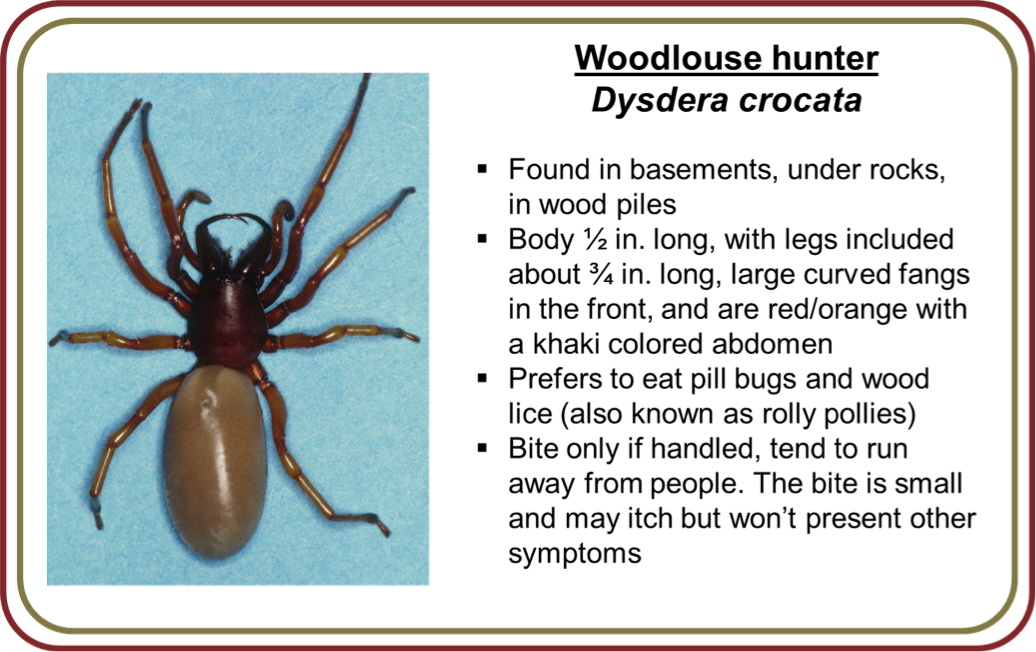
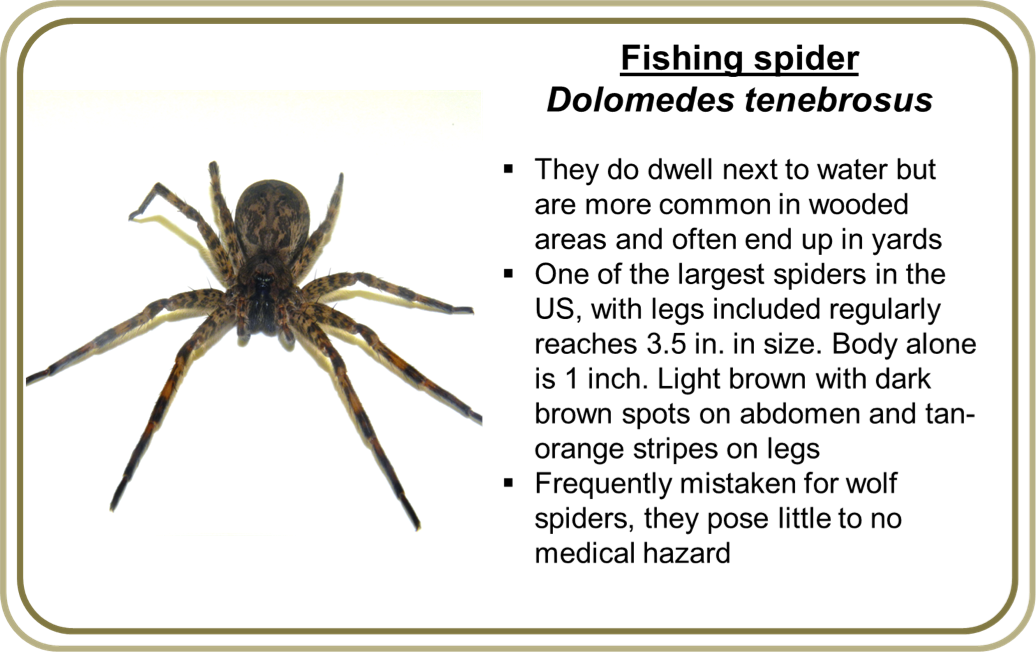

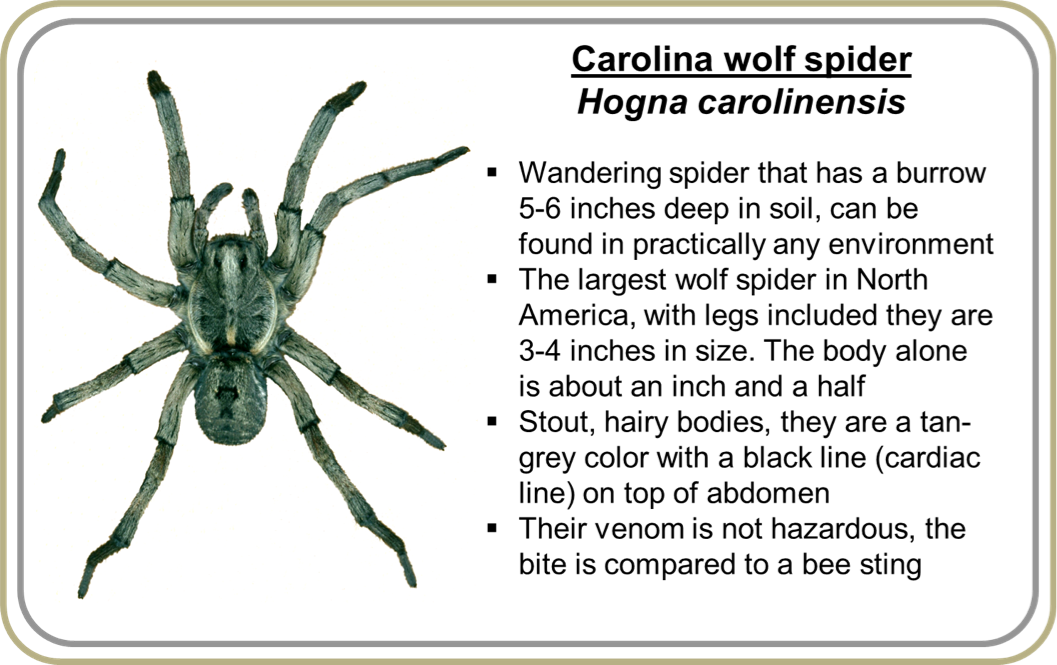
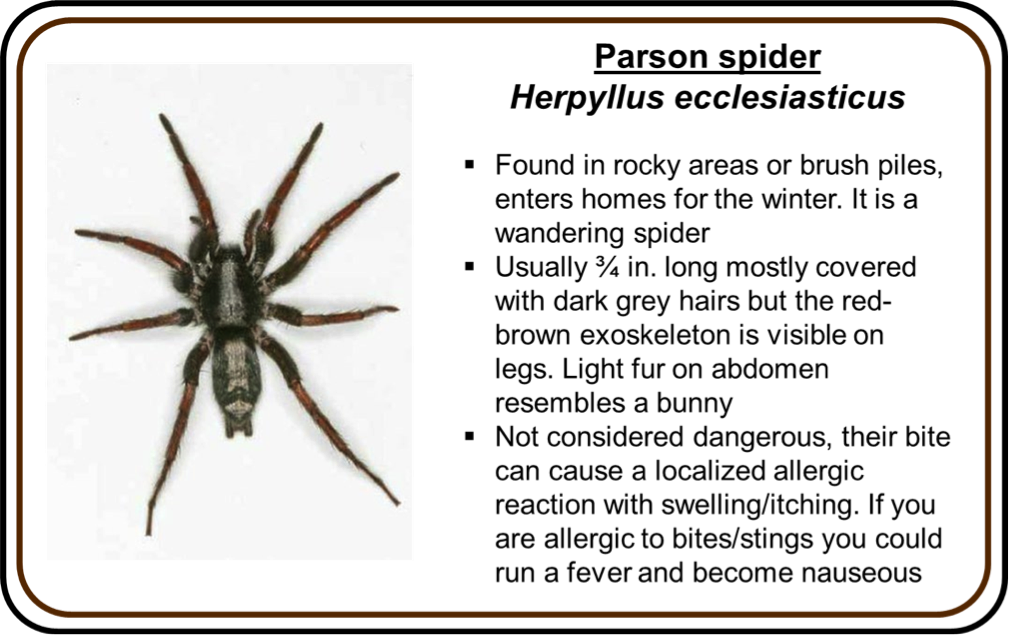

Fall Weeds And Insects
By Nicole Stoner, Nebraska Extension Horticulture Educator
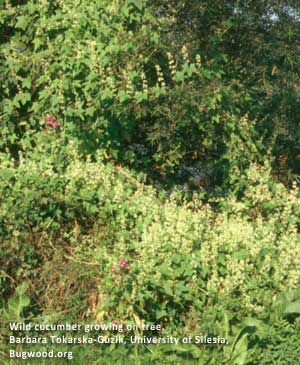 With fall coming right around the corner, many things are going on in our landscapes. There are many weed species creeping their way through our trees and lawns. We are also having a great deal of problems with many nuisance insect pests in our trees. The following are the horticultural pests I have had the most calls on over the past couple of weeks that I feel the majority of the public is trying to deal with.
With fall coming right around the corner, many things are going on in our landscapes. There are many weed species creeping their way through our trees and lawns. We are also having a great deal of problems with many nuisance insect pests in our trees. The following are the horticultural pests I have had the most calls on over the past couple of weeks that I feel the majority of the public is trying to deal with.
We are seeing wild cucumber covering up trees in our windbreaks. This weed is very similar to cucumber vine that you grow in your vegetable garden and it grows up and over our trees, especially through windbreaks. If left on the tree, most often the tree will survive, but in some cases, this vine can smother the tree from sunlight and cause death. It is very easily pulled and can be treated with general herbicides, such as 2,4-D, but only as a stump treatment or carefully painted on the leaves.
Another problem that many people are facing this year is the issue with high populations of crabgrass in lawns. With all of the spring rains we had this year, many weeds are taking over our lawns. Crabgrass is a warm season annual so it germinates early in the spring and dies with the first frost of the year. What is in your yard now, does not need to be controlled as it will die in the next couple of weeks. Just remember to apply a crabgrass pre-emergent herbicide in the spring next year.
I have had numerous calls lately on small branches on the ground all around large trees. This is most likely due to a couple of beetle insects, the twig girdler or the twig pruner. These are two very similar insects that cause similar damage to trees. These insects will chew small branches of trees causing them to fall out of the tree on windy days. The twig pruner causes branches to have a jagged edge where it tears from the tree after the inside is chewed. Twig girdler causes branches to have a very smooth cut on the outside of the branch, like it was pruned off with a pair of pruning shears. Both of these insects cause minimal damage, it is mainly an aesthetic nuisance to the tree. Chemical treatments are not necessary or recommended for treating twig girdler or twig pruner.
One thing that we all see as we drive around Nebraska right now, is fall webworm. Fall webworm is the immature form of a medium-sized white moth. The caterpillars form webbing at the ends of branches of many deciduous trees in the fall. This webbing entangles and kills the leaves within it, and causes no further harm to the tree. They are not necessary to control with chemicals and it is not effective to get chemicals through the webbing. If they are not wanted in your tree, for aesthetic reasons, they can be pulled out with a broom and put into a burn barrel (where permitted) or a bucket of soapy water.
Fall Is an Excellent Time to Control Biennial Weeds Including Musk Thistle, Dandelion & Henbit
By Brent Meyer, Lancaster County Weed Superintendent

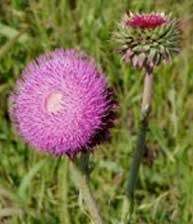 Most people think that once fall arrives that their weed control is done for the season. Not true, now up until the ground freezes or we get a heavy snowfall is the perfect time to control musk thistle in your pastures as well as dandelion and henbit in your lawns, making now the perfect time to control those pesky weeds for a cleaner pasture or lawn next spring.
Most people think that once fall arrives that their weed control is done for the season. Not true, now up until the ground freezes or we get a heavy snowfall is the perfect time to control musk thistle in your pastures as well as dandelion and henbit in your lawns, making now the perfect time to control those pesky weeds for a cleaner pasture or lawn next spring.
These biennial plants are all translocating nutrients to their root systems during the cool autumn months to survive the winter to get a good start next spring. Biennial and some perennial varieties are most susceptible to herbicide treatments at this time. Herbicide applications reach deeper into the root systems of undesirable plants (weeds) during the fall months simply because the plant is taking nutrients and water to the deep regions of its roots.
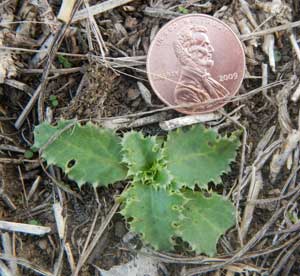 Lower rates of herbicides can be used with fall applications making weed control less expensive. Lower application rates go further into the plants before the top part of the plant is ‘burned off’ by the effects of the herbicides applied. Because of this, fall applications generally more effectively allow herbicides to get to “the root of the problem”. Fall applications are generally more environmentally friendly since most crops, gardens and flowers have been removed. Typically, treating biennial weeds this fall will show good results next spring because the plants have been stressed at their strongest points –the roots.
Lower rates of herbicides can be used with fall applications making weed control less expensive. Lower application rates go further into the plants before the top part of the plant is ‘burned off’ by the effects of the herbicides applied. Because of this, fall applications generally more effectively allow herbicides to get to “the root of the problem”. Fall applications are generally more environmentally friendly since most crops, gardens and flowers have been removed. Typically, treating biennial weeds this fall will show good results next spring because the plants have been stressed at their strongest points –the roots.
For more information on specific control recommendations on noxious or troublesome weeds use the UNL Extension Guide for Weed Management for the latest recommendations, or contact the Lancaster County Weed Control office at 402-441-7817 email: weeds@lancaster.ne.gov
Check out our new video on musk thistle identification on our web site.
Pasture Management For Animals Benefit
By Monte Stauffer, Nebraska Extension Livestock Educator
 Most of the animals that we graze on acreages get most of their nutrition from pastures. These animals may include cattle, horses, sheep, or goats. Many times we see lots of weeds in our pastures this time of year. We are tempted to graze these pastures heavily to get the animals to eat these unpalatable plants but this is not good for the health of the grasses. Grazing that allows sufficient leaf area to remain following grazing will allow for rapid growth, allows good winterizing, and holds snow and rain moisture on the land rather than running off will benefit the desirable grasses.
Most of the animals that we graze on acreages get most of their nutrition from pastures. These animals may include cattle, horses, sheep, or goats. Many times we see lots of weeds in our pastures this time of year. We are tempted to graze these pastures heavily to get the animals to eat these unpalatable plants but this is not good for the health of the grasses. Grazing that allows sufficient leaf area to remain following grazing will allow for rapid growth, allows good winterizing, and holds snow and rain moisture on the land rather than running off will benefit the desirable grasses.
Giving pasture plants adequate time to recover after grazing before grazing again is another way to improve or maintain pasture health and strengthen the competitive ability of desirable plants.
A good way to control weeds is to clip or spray the weeds while they are in the vegetative stage rather than waiting until they are in the reproductive stage when seeds are developing and maturing.
Weeds in a pasture can indicate the pasture is not in a healthy condition. Controlling the weeds is not enough. Changing management to strengthen desirable grasses and legumes is essential. These practices should include pasture rotational grazing, fertilization, and/or reducing stocking rate of livestock.
Keeping Livestock Healthy During the Season Changes
By Brett Kreifels, Nebraska Extension 4-H Assistant
 While the changing of the seasons can be a beautiful time with the changing of the leaves and the cooler weather, to livestock and poultry it can be a little stressful. The cool nights and hot days that come with transitioning from summer to fall and then from fall to winter can cause some animals to become stressed and sometimes sick. We as producers can help ease the transition for our livestock to ensure they maintain their gains and stay healthy through this time of change.
While the changing of the seasons can be a beautiful time with the changing of the leaves and the cooler weather, to livestock and poultry it can be a little stressful. The cool nights and hot days that come with transitioning from summer to fall and then from fall to winter can cause some animals to become stressed and sometimes sick. We as producers can help ease the transition for our livestock to ensure they maintain their gains and stay healthy through this time of change.
One of the easiest things to do is to keep the area in which the animals live clean and dry. With the up and down swings in temperature and humidity and the occasional shower, keeping the area in which the livestock or poultry are housed clean and dry is a must. Making sure manure is cleaned routinely is a good practice to adopt. This concept applies to any time of the year but when animals are stressed, combined with unsanitary conditions the onset of disease could be exacerbated.
One thing I do personally with my poultry is provide a vitamin/mineral supplement daily. Like us, taking a multivitamin is beneficial to our health, especially during stressful times. Often, a simple administration of water soluble vitamin/mineral supplements is enough to help promote health and help the animals cope with stressful situations like temperature changes. These supplements are often inexpensive and readily available at your local feed store. Likewise, feeding a well-balanced diet is a must. Grazing and browsing animals like sheep, goats, cattle and horses will need supplementation during the fall months due to the inadequate nutritional value of the pasture or forage. Keeping good quality grass or alfalfa hay available for those animals is appreciated as well as grain supplementation as required.
Water may be the last thing on our mind when thinking about keeping animals healthy but it is probably the most important aspect of animal health. Water is the most important nutrient your animals can receive. Thus, maintaining fresh water at all times is required. Maintaining fresh water is also a way to help prevent the spread of disease. Many animals that are commingled share the same water source. Changing the water on a routine basis can help prevent animals from “swapping spit” and getting sick.
Finally, having medication on hand just in case an animal should become ill is a good idea. Having a broad spectrum antibiotic in your first aid kit could be a proactive item to have. Making sure all animals are up-to-date on their vaccinations is also a plus during the stressful times of the year. Conditions such as coccidiosis and intestinal worms are often noticed in higher prevalence during the changing of the seasons due to the stress of the animals to the differing conditions. Routine worming and spotting disease symptoms early will help you control the disease before it gets out of hand. Quarantining sick animals away from the herd or flock is also a good practice to adhere to. This helps eliminate the contagious animal from the group and preventing the spread of the disease. Always remember, an ounce of prevention is worth a pound of cure, especially when you’re putting money into expensive food animals.
The Great Shakeout This October
By Ashley Mueller, Nebraska Extension Educator & Disaster Education Coordinator
 So here’s something you might not think about much living in Nebraska: earthquakes.
So here’s something you might not think about much living in Nebraska: earthquakes.
But they can happen. Remember the mid-August quake in the Sandhills? Although small on the Richter scale, the ground still rumbled.
The best way to prepare for an earthquake is to practice what you would do if you were faced with one. The Great Shakeout is a world-wide drill. This year it will take place on October 15 at 10:15 am—or conveniently, 10/15 at 10:15. Be sure set your alarm or write it on your calendar.
“Although earthquakes are rare in Nebraska, they are still a potential risk and are one of the natural disasters that we plan for here at NEMA,” said Bryan Tuma, assistant director for Nebraska Emergency Management Agency. “For the Great ShakeOut, take a minute out of your day to drop, cover and hold on, and think about what you would do during an actual earthquake.”
The drill is an annual opportunity for people in homes, schools and organizations to practice what to do during earthquakes, and to improve preparedness. Drop, Cover and Hold On is the established protocol to follow to reduce injury and death during earthquakes. If you feel the ground move, drop to the floor, find cover under a table or desk and cover your head and neck, and hold on to a stable object. Don’t come out until the rumbling has stopped.
Additional earthquake preparedness actions you can take include:
- Remove objects above your bed
- Anchor bookshelves and other furniture securely to the wall
- Stock your emergency kit
- Tell your family, friends, and neighbors about Drop, Cover and Hold On
- Watch this video from The Great Shakeout
“While Nebraska is at a moderate risk for earthquakes, knowing what to do when an earthquake occurs is important for people who travel to areas of higher risk,” Tuma said. Visit Nebraska's ShakeOut page to sign up to participate and learn how individuals, families, and organizations can prepare for earthquakes.
If you use social media, be sure to find Nebraska Extension – Disasters for the latest information on The Great Shakeout.
Facebook: Nebraska Extension – Disasters
Pinterest: Nebraska Extension – Disasters
Twitter: @NEExtDisasters
Article adapted from NEMA’s September 10, 2015, news release
Understanding the Water Filter in Your Refrigerator
By Sharon Skipton, Nebraska Extension Environment and Natural Resources Water Quality Educator
 What does the filter in your refrigerator do? Many refrigerators have Activated Carbon (AC) filters used to treat dispensed water and ice. AC filtration can effectively reduce certain harmless taste and odor-producing compounds in drinking water.
What does the filter in your refrigerator do? Many refrigerators have Activated Carbon (AC) filters used to treat dispensed water and ice. AC filtration can effectively reduce certain harmless taste and odor-producing compounds in drinking water.
Some private drinking water supplies may be disinfected with chlorine. Continuous chlorination should not be a substitute for a sanitary water supply. Protecting the water supply from bacterial contamination should be the primary goal for assuring good water quality. Chlorination also can be one step in the process of managing iron, manganese, or hydrogen sulfide in a private water supply. If organic matter is present in the water supply, chlorine can react with it to produce compounds such as trihalomethanes as byproducts. These byproducts may increase the risk of certain cancers. AC filtration can be effective in removing chlorine and some associated byproducts.
Solvents and pesticides such as atrazine can present a health risk if present in drinking water at high enough concentrations. AC filtration can effectively reduce some of these chemicals if they are present in a private drinking water supply. In addition, lead from some older pipes and soldered joints may be present in water from some taps. AC filtration can reduce lead in drinking water, though only very specialized AC filters effectively adsorb heavy metals.
Different types of carbon and carbon filters remove different contaminants and no one type of carbon removes all contaminants at maximum efficiency. AC filters will not remove microbial contaminants (such as bacteria and viruses), calcium and magnesium (hard water minerals), fluoride, nitrate, and many other compounds.
AC filtration cartridges must be replaced regularly. When the filter becomes full of contaminants, the filter is saturated and has reached its capacity. At this point, no additional contaminants will be adsorbed, and some may move from the filter back into the dispensed water. When this occurs, it is possible that the concentration of contaminants in the dispensed water may actually be higher than it was in the untreated tap water.
For additional information on AC filtration, see the Nebraska Extension publication "Drinking Water Treatment: Activated Carbon Filtration."
Plants that Take Patience Pay Off
By Karma Larsen, Nebraska Statewide Arboretum
 “A garden requires patient labor and attention. Plants do not grow merely to satisfy ambitions or to fulfill good intentions. They thrive because someone expended effort on them.” Liberty Hyde Bailey
“A garden requires patient labor and attention. Plants do not grow merely to satisfy ambitions or to fulfill good intentions. They thrive because someone expended effort on them.” Liberty Hyde Bailey
Gardeners tend to be impatient with their landscapes. They want growth as quickly as possible—with all the additional perks of color, focus, privacy—and preferably this year, this season, this month, this week, now. But if you've gardened long enough, you've probably learned that the plants that take the most patience tend to be, in the long run, the most long-lived.
There are advantages to slow, or at least unseen, growth. Often it means that plants are putting their energy underground in the form of root growth. Once their roots are established, they will get about the business of growing upwards, but first they concentrate on a solid base.
Most perennials—plants that live for two or more years—are slow starters. A few perennials, like chrysanthemums, do their best when they're transplanted every couple of years, but many are happy to remain in place for 10 years or more. Long-lived perennials include peony, bleeding heart, sedum, Siberian iris, gas plant, Lenten rose, Epimedium, goat's beard, Corydalis and ornamental grasses.
For the initial planting, it's important to know the plant's mature size and space it accordingly. Placing small, fragile plants a foot or more apart can look silly the first few years but eventually they'll need the space, and deep-rooted plants don't adapt to moving and transplanting as well as their shallow-rooted companions. Planting annuals among them the first few years can help ease the transition and keep out weeds while they get established.
Prairie plants are by nature deep-rooted to withstand drought and competition, and many of them take a few years to reach mature size. Keeping weeds out the first few years is important since most weeds are extremely fast-growing annuals designed to complete their life cycle in the first season. Annual weeds can often grow to 4 feet or more in one year, shading prairie seedlings and competing for water and nutrients.
We're all influenced by appearance and that's certainly true in the nursery, where many prairie plants are overlooked because of how fragile they appear. They simply aren't happy in small nursery pots where their roots can't spread down and out. The stems of plants like milkweed look like wispy hairs early on—they seem far too fragile-looking to place with grasses or other perennials. But give them some time, care and watering and they'll outlive many of their neighbors. Even woody-stemmed plants like Baptisia and leadplant look like they couldn't survive in tough soils. But that's precisely what they are accustomed to, and what their roots are waiting for.
So when you're planning your next garden bed, give some thought to future years and do a little research on how long the plants you're wanting to grow are likely to live. If you're thinking about the long run, you may have to be a little patient in the beginning... but it'll pay off.
Nebraska Statewide Arboretum is a nonprofit that works toward sustainable home and community landscapes through initiatives in education, public gardens and the environment. Plant and landscape resources athttp://arboretum.unl.edu.
Golden Ginkgo
By Justin Evertson, Nebraska Forest Service
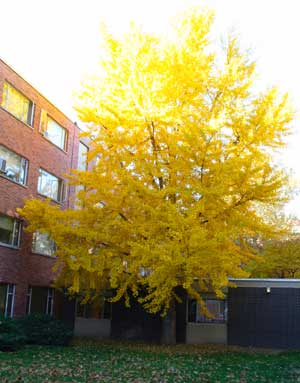 Few trees are more awe-inspiring than the ginkgo (Ginkgo biloba). They've survived for more than 150 million years, and they actually grew alongside dinosaurs for much of their existence. Although now nearly extinct in the wild, the fossil record shows that the ginkgo used to grow in abundance throughout much of the world, including North America. It was native in Nebraska over 70 million years ago.
Few trees are more awe-inspiring than the ginkgo (Ginkgo biloba). They've survived for more than 150 million years, and they actually grew alongside dinosaurs for much of their existence. Although now nearly extinct in the wild, the fossil record shows that the ginkgo used to grow in abundance throughout much of the world, including North America. It was native in Nebraska over 70 million years ago.
Since its rediscovery by western botanists in China and Japan around 1700, the ginkgo has been planted throughout much of Asia, Europe and North America. The first ginkgos are thought to have been planted in Nebraska in the late 1800s. Today, many ginkgos can be found in the state, including large specimens in Lincoln, Kearney and Omaha and an impressive grove at Arbor Lodge State Historical Park in Nebraska City. Though not as reliable in the western part of the state, some specimens are surviving there with extra care and protection, including some impressive specimens in downtown Potter.
The ginkgo is respected enough by the nursery industry to have been selected as a Tree of the Year back in 2005 for the GreatPlants® for the Great Plains program, a joint effort of the Nebraska Nursery and Landscape Association and the Nebraska Statewide Arboretum that selects and promotes exceptional plants well-suited to the region. Ginkgo can grow up to 60 feet tall and 50 feet wide and its distinctive fan-shaped leaves turn a nice golden yellow in the fall. It's dramatic both in its golden fall color and the fact that, once it freezes, the leaves tend to fall to the ground seemingly overnight rather than over an extended period.
In its native China, herbal extracts of ginkgo leaves have been used medicinally for thousands of years to treat a wide variety of ailments. Scientific research does not support many of these claims, however, but it does appear that ginkgo can aid blood circulation and improve memory in some people. It is now being researched closely as a possible benefit to Alzheimer patients.
Beware that female ginkgo trees produce seeds within very stinky fleshy fruits. The smell most likely evolved to attract animals that eat carrion, thus helping to spread its seeds. For this reason, most people prefer to plant one of the many male cultivars that are available in the nursery trade, including the fairly common 'Autumn Gold' variety. If the sex of the seedling/nursery plant is not known, it would be wise not to place it near a sidewalk or within about 30 feet of where its potential fruit aroma might be problematic.
The Nebraska Forest Service strives to enrich lives by protecting, restoring and utilizing Nebraska's tree and forest resources.
Attractive Fall Shrubs
By John Fech, Nebraska Extension Horticulture Educator
 If you think of an attractive fall shrub, your mind may race immediately to burning bush, Euonymous alatus. Sure, that’s a nice one, but it’s not the only one. There are many more worthy of incorporating into the landscape, creating a diversity of plant species and features. Consider these suggestions from Sandra Mason, University of Illinois horticulturist:
If you think of an attractive fall shrub, your mind may race immediately to burning bush, Euonymous alatus. Sure, that’s a nice one, but it’s not the only one. There are many more worthy of incorporating into the landscape, creating a diversity of plant species and features. Consider these suggestions from Sandra Mason, University of Illinois horticulturist:
Little Henry® Virginia sweetspire (Itea virginica 'Sprich') is a very usable size at 3-4 feet tall with lightly scented, pure white flowers that explode into fireworks at the branch tips. The dark green leaves convert to brilliant oranges and reds in fall. Sweetspire prefers moist soils and tolerates wet conditions as it grows in full sun to full shade and requires little pruning.
Flameleaf sumac (Rhus copallina) has few rivals for magnificent fall color. Flameleaf is perfect as a tall screen or as a tall groundcover allowed to ramble over a berm. It can reach 20 to 30 feet tall and just as wide as it sends out new shoots around the mother plant. The lustrous dark green leaves of 9-21 leaflets live up to their name as they ignite into crimson-red and scarlet in autumn. The cultivar 'Creel's Quintet' has 5 leaflets and grows only 5-8 feet tall.
Tiger Eyes Sumac™ (Rhus typhina 'Bailtiger') is a marvelous chartreuse-leafed selection of staghorn sumac. As if a summer long show of chartreuse leaves was not enough reason for us to crave it, the leaves drain into brilliant oranges and scarlets in fall. Tiger Eyes™ grows in full sun to part shade and reaches 6 feet tall and wide. It also forms new shoots, but minimally compared to other sumacs. The fabulous leaf color all season makes Tiger Eyes Sumac™ perfect as a focal point in the landscape.
Oakleaf hydrangea (Hydrangea quercifolia) doesn't have the typical mophead flower of many hydrangeas; however, it does offer the four seasons of interest lacking in other hydrangeas. Flowers are typically white in 3-12 inch long panicles at branch tips. The dark green leaves, reminiscent of red oak leaves, can reach 8 inches long for a show stopper in the landscape. In autumn the hefty leaves are reluctant to tumble as they change to red and purple and remain until early winter. Stems are eye-catching with cinnamon colored, exfoliating bark. Oakleaf's winter appearance is not exactly beautiful, but definitely interesting; as interesting as grandma wearing a mini skirt. You can't help but stare.
Red chokeberry (Aronia arbutifolia) and black chokeberry (Aronia melanocarpa) suffer from unappealing common names. These showy North American native shrubs offer lovely flowers in spring. Their lustrous dark green leaves transform into brilliant red to wine red in October. With their long legs and upright growth chokeberries are perfect for flower borders and are quite adaptable. 'Brilliantissima' red chokeberry is 6-8 feet tall with brilliant scarlet leaves in fall and more flowers and larger, more abundant fruit than regular chokeberry. Iroquois Beauty™ (Aronia melanocarpa 'Morton') is a smaller black chokeberry at 2-3 feet tall. All viburnums display their superb spring flowers, yet most have remarkable fall color as well. 'Mariesii' viburnum possesses a distinctly horizontal habit with snow white flowers embellishing the full length of each branch. Fall color as with many viburnums is a collection of red, yellow and purple.
Post Harvest Vineyard Management Is Important!
By Paul Read, University of Nebraska - Lincoln Viticulture Specialist
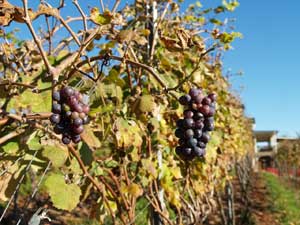 Soon the harvest will be complete and the winemaking process well underway to production of more award-winning Nebraska wines from an abundant vintage. So this means we can walk away from the vineyard and sit back and sip some of those wines, right? WRONG!
Soon the harvest will be complete and the winemaking process well underway to production of more award-winning Nebraska wines from an abundant vintage. So this means we can walk away from the vineyard and sit back and sip some of those wines, right? WRONG!
Post-harvest care of the vineyards is critically important, especially if any disease problems have been encountered during the growing season. I have noted severe problems with Black Rot, and to a lesser extent Downy Mildew and Powdery Mildew, in several Nebraska vineyards. This means that if any such problems occurred in your vineyard, you will find it necessary to apply appropriate measures to ensure that your vines will be productive next year.
- Vineyard hygiene/clean-up will be necessary. Do not leave diseased clusters hanging on the vines or to accumulate under the vines. They can serve as inoculum sites for future disease problems.
- Be sure to clean up and destroy all prunings that might also serve as inoculum for future disease outbreaks.
- Use appropriate fungicide sprays to combat serious infections. If the diseased leaves begin to dry up and fall on the ground, don't think that this is a natural phenomenon if you haven't experienced freezing temperatures. Control of foliar diseases prior to going into the fall season can help with cane hardening and subsequent winter hardiness.
- In dry soils it may be necessary to irrigate (e.g., western Nebraska vineyards, vineyards with well-drained, sandy soils), but if the soil has adequate moisture don't do anything to encourage soft new growth which will be vulnerable to early fall freeze damage and possibly winter damage.
- Fertilizer applications should have ceased well before harvest, although if tissue analyses have indicated micronutrient deficiencies, sprays of these elements applied to healthy vines may be beneficial. Nitrogen applied late in the season can cause soft new growth that is easily injured by cold (see note above).
- For new plantings that have been protected with grow-tubes (vine shelters, Bluetubes, etc.), it is imperative that these be removed right away, if they have not already been removed.
- If you have planted vines that are borderline for your area or slow to establish, such as viniferas, 'Traminette', 'Norton', 'Seyval Blanc', 'Chambourcin' for example, you may wish to plan to mound soil up around the base of the vines for winter protection. This should be done after the leaves have fallen and a hard freeze has occurred, usually late October to mid-November. Mound the soil up to a depth of 15 to 18 inches and be sure to cover the graft union for grafted vines. Our research with 'Gewurztraminer has demonstrated that this practice is effective, although it is labor-intensive and questionable with regard to economic sustainability.
Most of the foregoing comments are aimed at achieving optimum conditions for maximum hardening to help your vines go into winter in the healthiest possible condition. Well-hardened canes will have turned from green to brown and have become well-suberized; they actually will have produced the beginnings of a bark layer.
Good luck with your fall vineyard management practices (and enjoy those great Nebraska wines!).
Cold Frames
By Nicole Stoner, Nebraska Extension Horticulture Educator
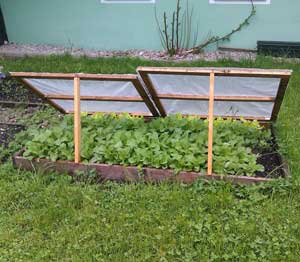 This year, gardening has been difficult. We have faced many challenges. Our early spring gardens didn't do as well due to flooding. And our summer gardens were late to get planted in many locations because of rainy weather and water soaked soils. Then, the rainy, cool weather shut off and we were faced with hot conditions and many of our plants had a lot of fungal diseases due to the rainy spring.
This year, gardening has been difficult. We have faced many challenges. Our early spring gardens didn't do as well due to flooding. And our summer gardens were late to get planted in many locations because of rainy weather and water soaked soils. Then, the rainy, cool weather shut off and we were faced with hot conditions and many of our plants had a lot of fungal diseases due to the rainy spring.
So, now the option is to get a great fall garden to help stock your pantry and freezer with preserved vegetables for the winter. Fall gardens are a great way to grow many of our spring vegetable crops again for more harvest or to get harvest from plants that may not have been very productive in the spring. The good thing about a fall garden is that you can have less insect pressure on the plants in the fall because the peak numbers for many of our insect pests is in the summer, and should be tapering off by the fall. Hopefully you already planted your fall garden. They need to be planted in the beginning to the middle of August to ensure a harvest before frost hits.
If you didn't get you fall garden planted in the beginning part of August, you still may have a chance to extend your growing season, by building a cold frame. A cold frame is described by University of Missouri Extension as "a protected plant bed with no artificial heat added". This is a good way to keep summer plants protected a bit longer into the fall or keep fall plantings a lot further into the fall. You build a box frame that is higher in the back than it is in the front and cover it with transparent plastic. This box is placed over the garden to increase the temperature of it by 5-10 degrees. You can even get a few more degrees warmer if you place a blanket over top of that on really cold nights.
A cold frame garden should be placed on the south side of a building to receive the highest amount of sunlight to keep it warmest. If it gets warm during the day, you can lift the lid of the cold frame and prop it up to ventilate the garden. A cold frame can also be used in the spring to harden off any plants that you grow from seed indoors.
Cold frame's are great to use to get a little more production out of some of our summer vegetable crops, especially if we see an early frost. It is also a great way to extend the growing period for many of our fall vegetable crops. This will allow us to go further into the fall.
Life Below Our Feet - Author of The Soil Will Save Us to Speak Oct. 23
 “The soil is the great connector of lives, the source and destination of all. It is the healer and restorer and resurrector, by which disease passes into health, age into youth, death into life. Without proper care for it we can have no community, because without proper care for it we can have no life.” Wendell Berry
“The soil is the great connector of lives, the source and destination of all. It is the healer and restorer and resurrector, by which disease passes into health, age into youth, death into life. Without proper care for it we can have no community, because without proper care for it we can have no life.” Wendell Berry
Journalist Kristin Ohlson is the speaker for the Nebraska Statewide Arboretum’s Young Lecture Oct. 23 in Lincoln. Ohlson is the author of The Soil Will Save Us: How Scientists, Farmers and Foodies are Healing the Soil to Save the Planet (Rodale, 2014), which looks at the work of pioneering scientists and agriculturalists to develop land management practices that respect nature and heal landscapes. It won a 2015 Books for a Better Life award in the “Green category” and was a finalist for a 2015 Oregon Book Award. The Los Angeles Times said Ohlson “directs our gaze earthward, to take a long, hard look at the dirt beneath our feet. We may have overlooked a solution there...This is a hopeful book and a necessary one.”
Her articles have appeared in the New York Times, Salon, Smithsonian, Discover, New Scientist, Gourmet, Oprah and many other print and online publications. She is the author of the memoir Stalking the Divine, which won the American Society of Journalists and Authors Best Nonfiction Book Award in 2004, and co-author of the 2007 New York Times bestselling Kabul Beauty School.
Ohlson is the featured speaker of the 2015 Joseph and Dorothy Young Memorial Lectures in Horticulture Oct. 23 at the University of Nebraska-Lincoln Hardin Hall, 3310 Holdrege. The ticketed lecture is at 7:30 p.m. A reception with hors d’oeuvres and desserts precedes the talk at 6:30 p.m. The cost for the lecture is $15 for NSA members and $20 for non-members; and lecture plus reception is $20 for NSA members and $30 for non-members. Space is limited. Sign up at plantnebraska.org or call 402-472-2971.
The Nebraska Statewide Arboretum hosts the Young Memorial Lecture in Horticulture to honor the late Dr. Joseph Young who served the university from 1958 to 1980 as chair of the Department of Horticulture and founder and first director of the Nebraska Statewide Arboretum. A visionary advocate for landscape beautification, he helped establish Maxwell Arboretum, UNL Botanical Garden and Arboretum and the Nebraska Statewide Arboretum, host for the lecture. Learn more at plantnebraska.org.


